Mytilus californianus (Conrad, 1837)California Mussel |
|
| Synonyms:
None
|
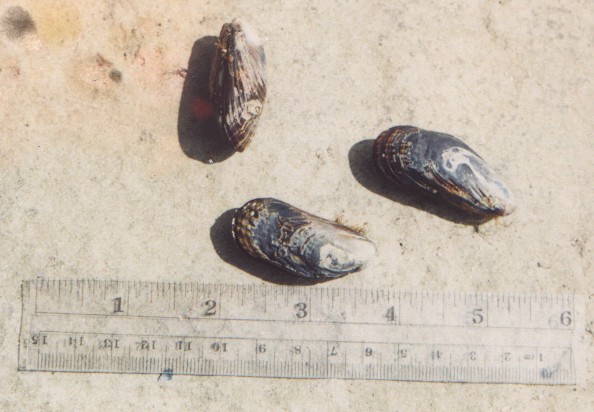 |
| Phylum Mollusca
Class Bivalvia Subclass Pteriomorpha Order Mytiloida Family Mytilidae |
|
| Mytilus californianus: Very small individuals. Royal Palm State Beach, Los Angeles | |
| (Photo by: Dave Cowles, April 4, 1993) | |
Description: This mussel shell has a thick profile and the anterior end (umbo) is sharply pointed. It has strong radial ribs and irregular transverse growth lines. Parts of shell are often eroded. The periostracum is usually heavy and blue-black. The shell interior is blue-gray, may be slightly iridescent. Attach to rocks by byssal threads.
How to Distinguish from Similar Species: The most similar local mussel species is the blue or bay mussel, Mytilus trossulus. M. trossulus has a smoother shell and is often wider than M. californianus for its length. Mature M. californianus are distinguished especially by the strong radial ribs and irregular transverse growth lines, which M. trossulus does not have. M. galloprovincialis lives in the southern end of M californianus' range (from central CA south), and is nearly indistinguishable from M. trossulus. Mixed clusters of M. californianus and M. galloprovincialis can be found on the open coast in southern areas. M. trossulus seldom has much presence in the northern wave-exposed coasts, so exposed mussel beds are mostly M. californianus.
Geographical Range: Aleutian Islands to Baja California
Depth Range: Intertidal to 24 m
Habitat: Common in intertidal zone 3 (lower midlittoral). Less common subtidally. Clings to rocks in wave-exposed areas, especially on the open coast.
Biology/Natural History: A very common inhabitant of the lower midlittoral (zone 3), where it often dominates the substrate in waveswept areas (picture). Specializes in living on large boulders and bedrock. Can move slowly from place to place by systematically breaking and remaking byssal threads. A filter feeder, filters 2-3 liters/hour. Spawns all year but spawning peaks in July and December in CA. A favorite prey of the seastar Pisaster ochraceous (picture). Small mussels are eaten by seabirds and by the oyster drill snails Nucella emarginata,Ceratostoma nuttali, and Roperia poulsoni, although it is less vulnerable to predation by snails than is M. trossulus (Wootton, 2002). In central CA parasitic isopods are often in the mantle cavity, as is also a pycnogonid and a pea crab. May become poisonous in summer months through ingestion of dinoflagellates, especially Gonyaulax catanella (causes paralytic shellfish poisoning).
Although this species may experience high flow in the intertidal environment due to wave action, byssal thread production seems to be limited to flows of < 50 cm/s. Mussel aggregations sharply reduce water flow within them and make possible the production of byssal threads (Carrington et al., 2008)
A study done on the related species Mytilus edulus (from the Atlantic) found that the movements of individual mussels correspond to a Levy walk pattern rather than a ballistic or Brownian pattern. This resulted in creating clusters with small-scale crowding, along with larger-scale dispersion. In this pattern mussels maximized the number of mussels immediately close to them (which reduced their chance of being dislodged by wave action) while at the same time minimized the number of mussels in the general area (which would increase competition for food). [de Jager, Monique, Franz J. Weissing, Peter M. J. Herman, Bart A. Nolet, and Johan van de Koppel, 2011. Levy Walks Evolve Through Interaction Between Movement and Environmental Complexity. Science 332 pp 1551-1553. A commentary on the article is on page 1514 of the same issue]
| Return to: | |||
| Main Page | Alphabetic Index | Systematic Index | Glossary |
References:
Dichotomous Keys:
Kozloff
(1987)
General References:
Morris
et al., (1980)
Scientific
Articles:
Carrington,
Emily, Gretchen M. Moeser, Sean B. Thompson, Laura C. Coutts, and
Carrie
A. Craig, 2008. Mussel attachment on rocky
shores: the
effect of flow on byssus production. Integrative and
Comparative
Biology 48:6 pp 801-807
Gosling, Elizabeth, 1992. The Mussel Mytilus: Ecology, Physiology, Genetics and Culture. Developments in Aquaculture and Fisheries Science 25. Elsevier. 563 pp.
López-Duarte,
Paola C., Henry S. Carson, Geoffrey S.
Cook, F. Joel
Fodrie, Bonnie J. Becker, Claudio
DiBacco, and Lisa A.
Levin, 2012. What controls connectivity?
An empirical,
multi-species approach. Integrative and Comparative Biology
52:4
pp. 511-524
Wootton, J. Timothy, 2002. Mechanisms of successional dynamics: consumers and the rise and fall of species dominance. Ecological Research 17 pp. 249-260
Zweibel, Jennifer A. and Markes E. Johnson, 1995. Late Pleistocene mytilid and petricolid bivalves from the open rocky shores of Pacific Baja California (Mexico): Unusual preservation of macrofossils. Journal of Coastal Research 11:3 pp 704-716
General Notes and Observations: Locations, abundances, unusual behaviors, etc.:
Fossils of this species were found in a very-well preserved layer associated with the Pleistocene-Cretaceous nonconformity at Punta Cabras on the Pacific coast of Baja california (Zweibel and Johnson, 1995)
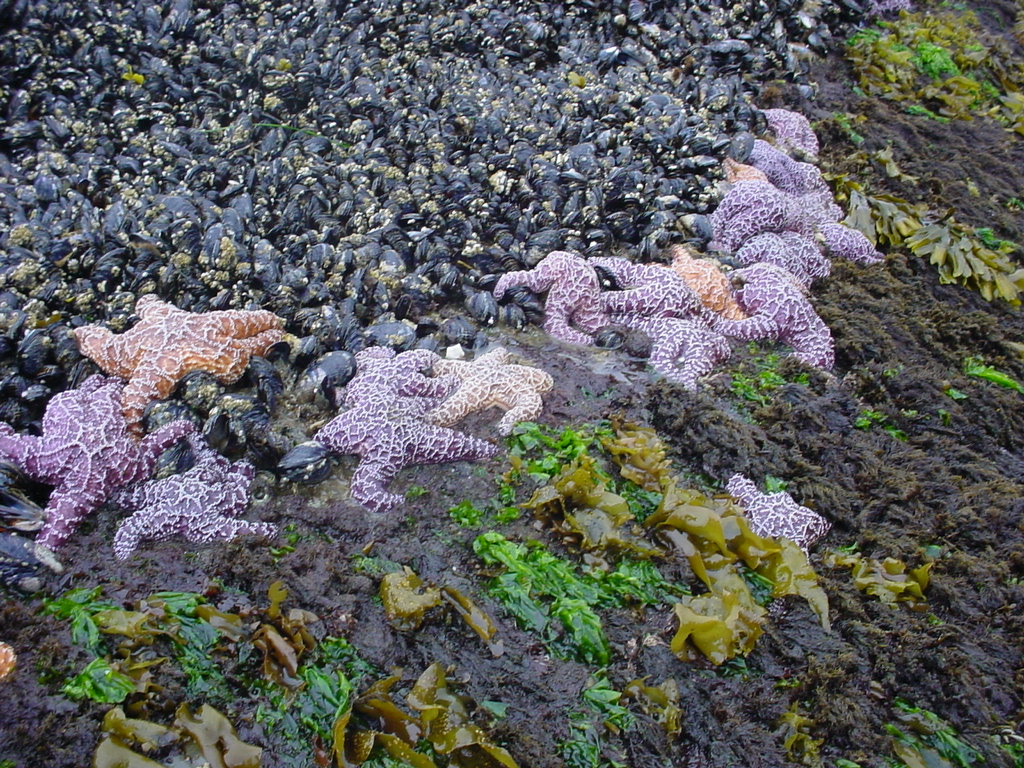
M. californianus often dominates the lower
intertidal zone on
the open coast. The seastar Pisaster
ochraceous is an important predator.
Photo by Dave Cowles near Goodman Creek, 7-2004
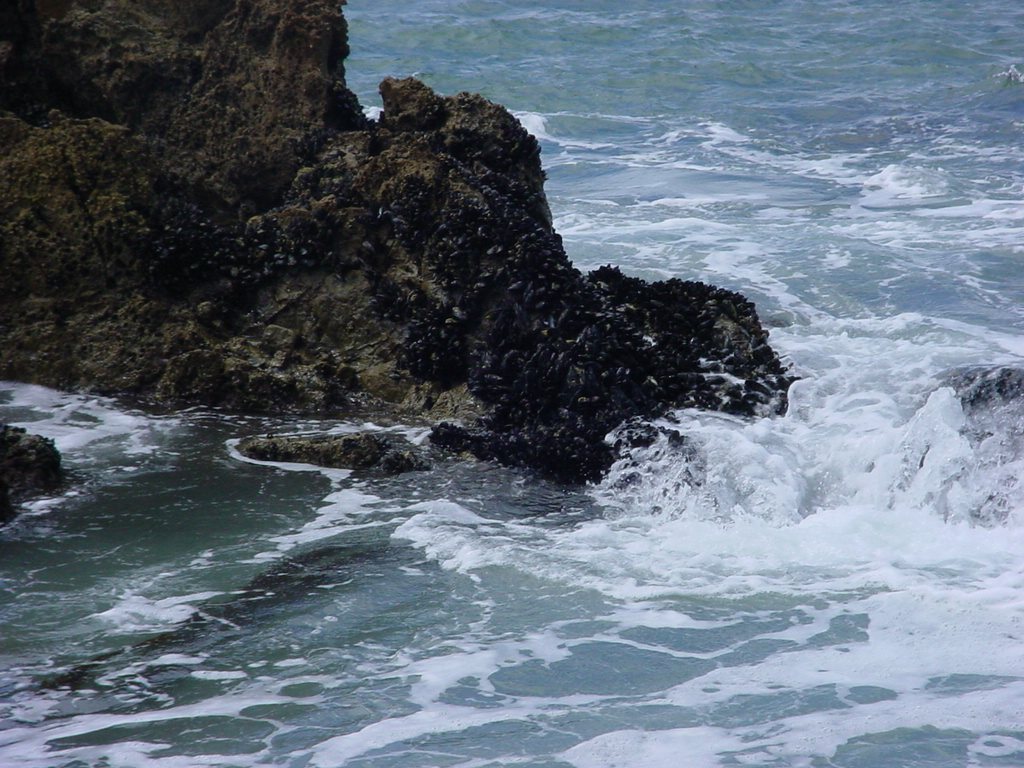
A cluster of M. californianus on rocks at Little
Corona del
Mar, Ca. Note how they cover much of large areas of the lower
intertidal.
Photo by Dave Cowles, March 2005.
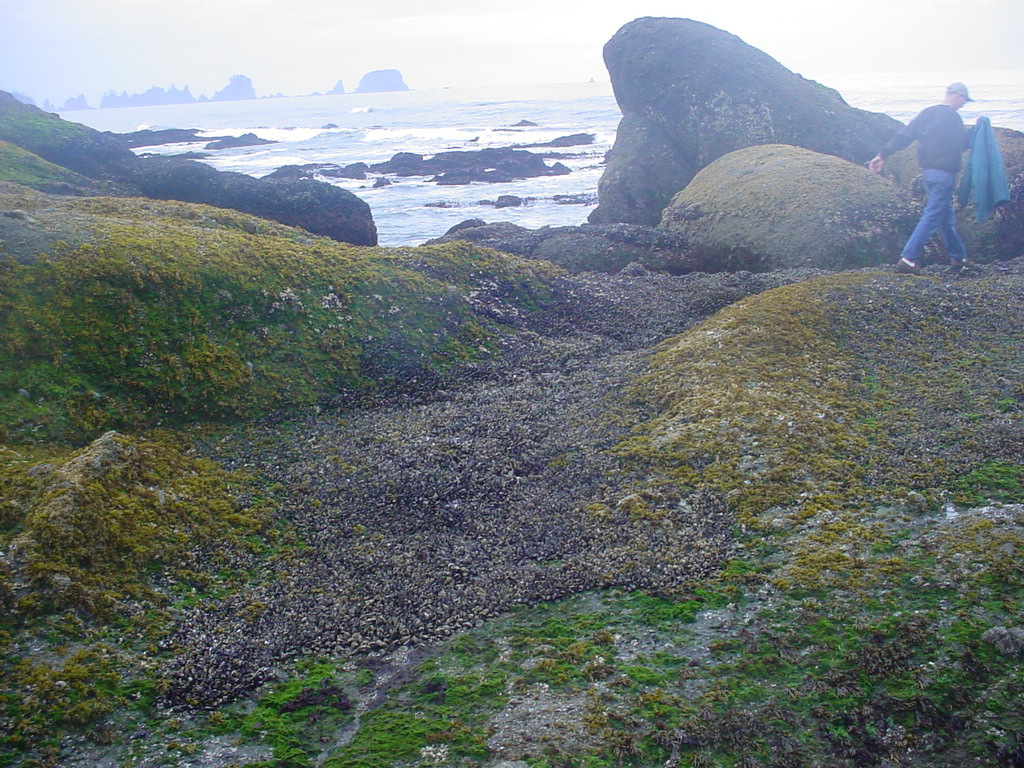
In areas exposed to very heavy surf, mussels may be most common in
cracks or depressions where they have not been swept off by logs
(above).
In other spots, they may be abundant
on exposed rock faces but the aggregations often have an abrupt lower
edge, probably due to predation by Pisaster
ochraceous (below). Photos by Dave
Cowles, Sept 2005 at Shi
Shi beach.
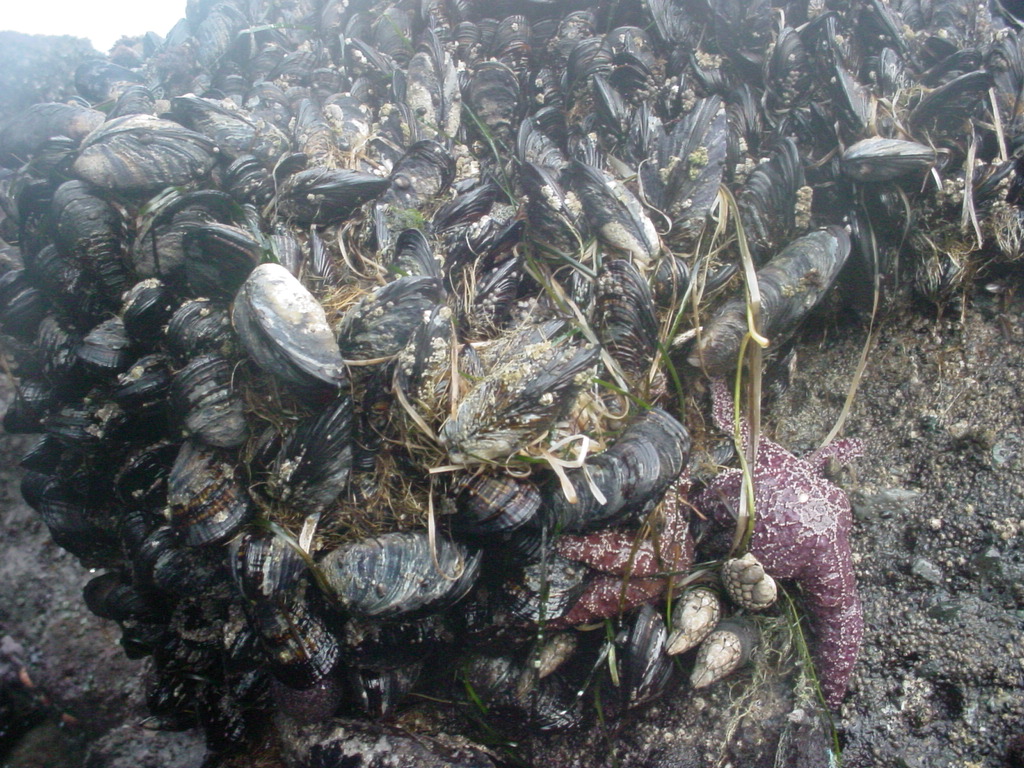
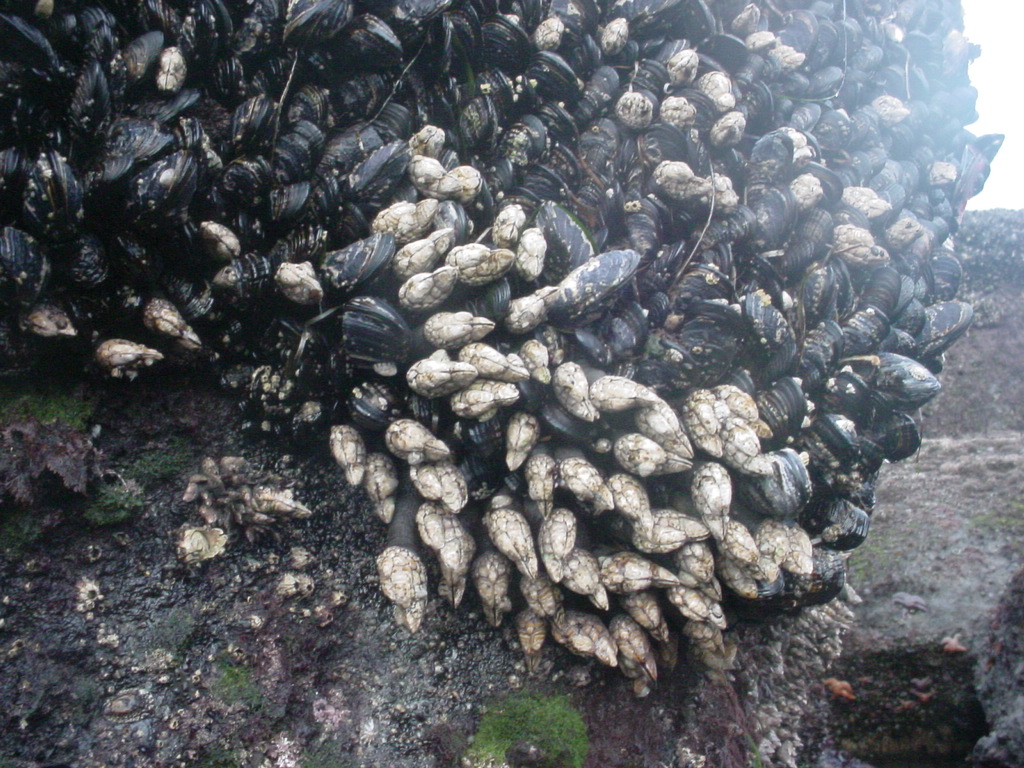
California mussels and the goosneck barnacle Mitella
polymerus often compete for space in exposed areas
of the lower
intertidal. Mytilus usually eventually
wins unless it is removed
by seastars.
Photo by Dave Cowles, September 2005 at Shi shi beach, WA
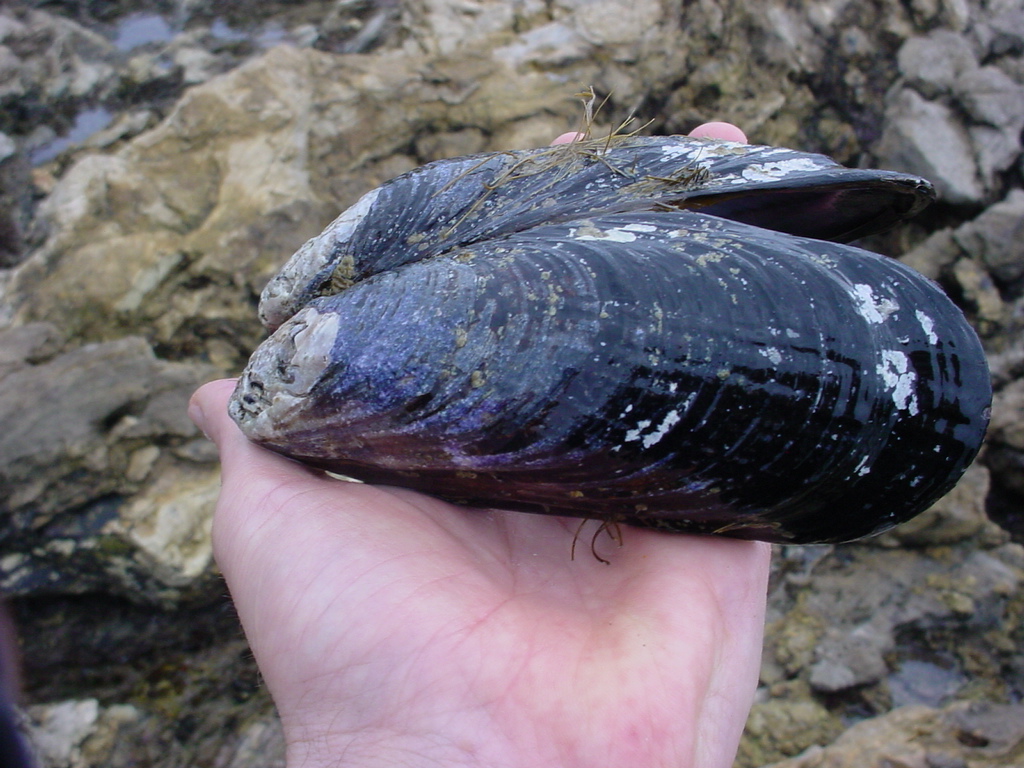
This species can grow very large. Photo by Dave Cowles,
Little
Corona del Mar, CA March 2005
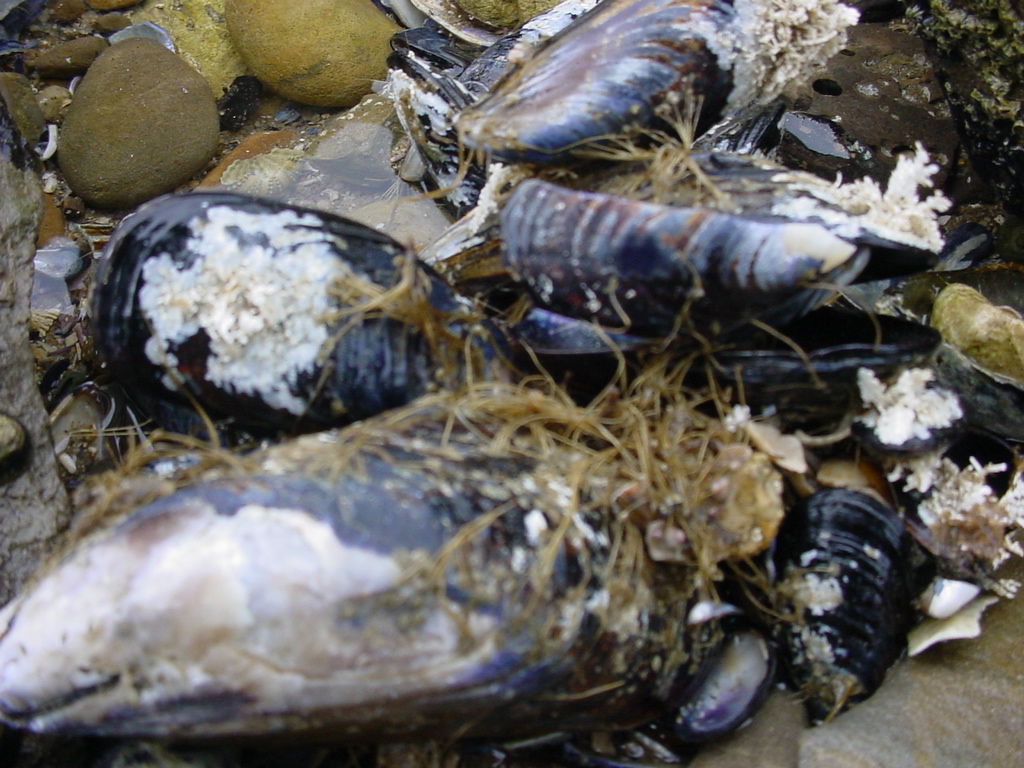
Individuals hold onto the substrate or to one another by byssal
threads,
which they secrete by a gland on their foot. Photo by Dave
Cowles,
March 2003
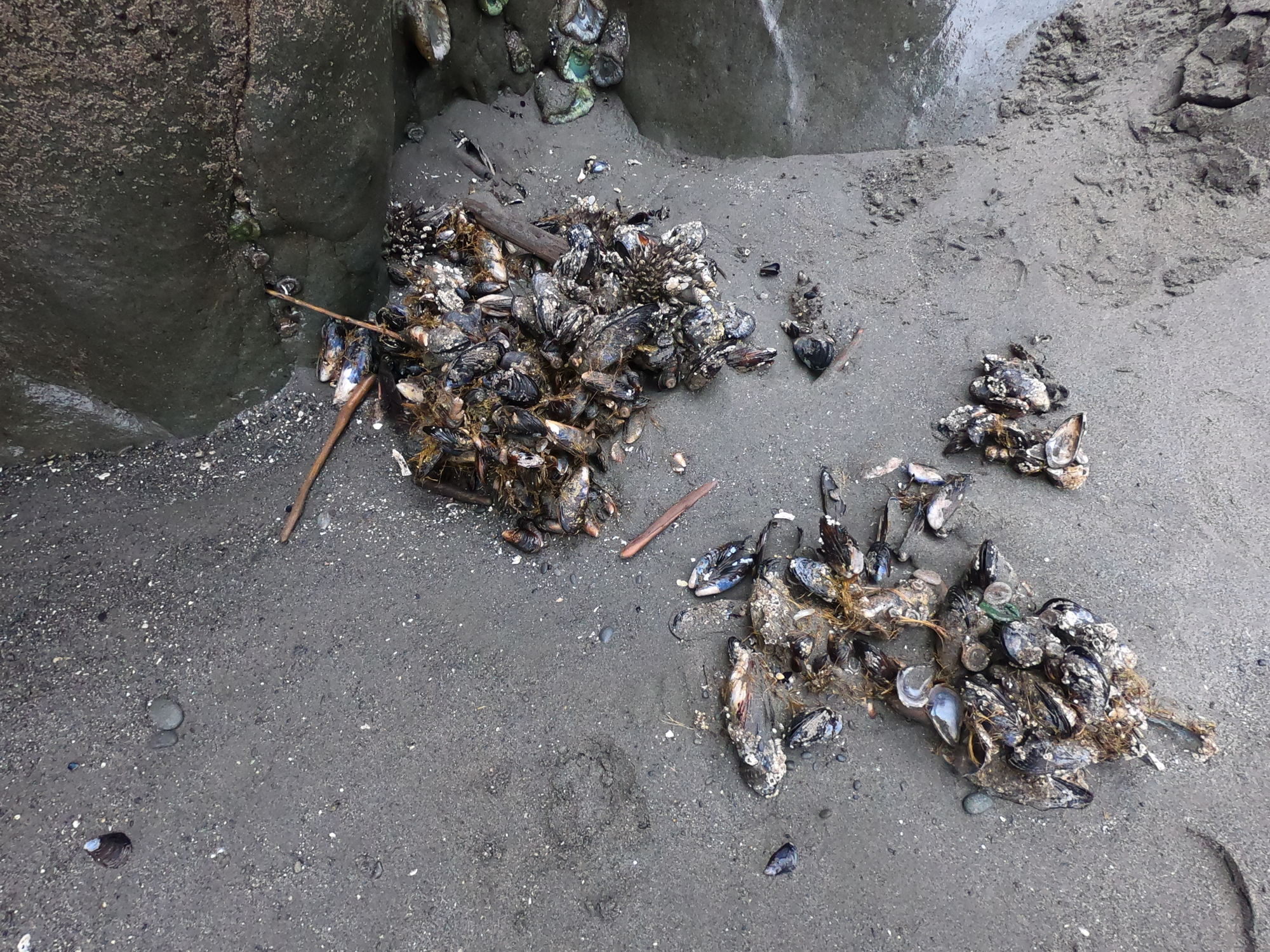
When
mussels cluster so tightly together they often attach to one another,
making a several-mussel-thick pile of animals called a druse. Parts of
the druse can then be torn off by waves and cast ashore. Photo at
Kalaloch Beach #4 by Dave Cowles, July 2022
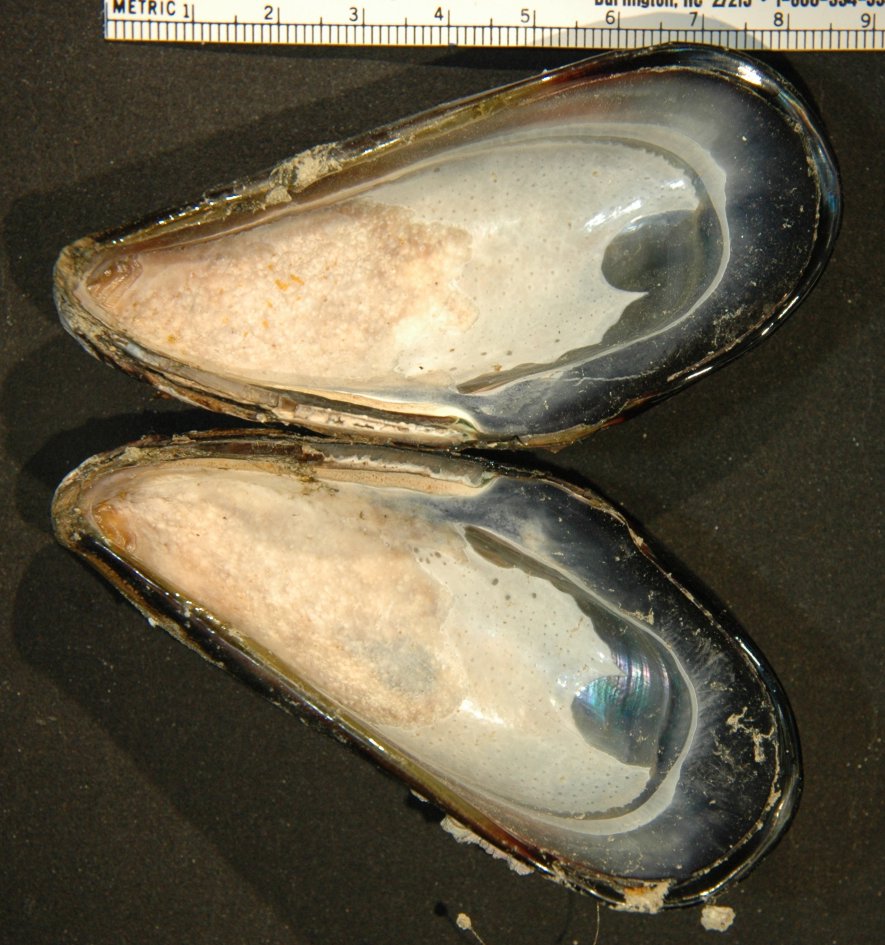
On mussels such as Mytilus californianus, only the posterior
adductor scar is large. In this photo anterior is
to the left
and posterior is to the right.
The pallial
line is marked by the border between the whitish and dark nacre.
The oval-shaped, shiny scar near the pallial
line on the right is the scar
for the posterior
adductor muscle.
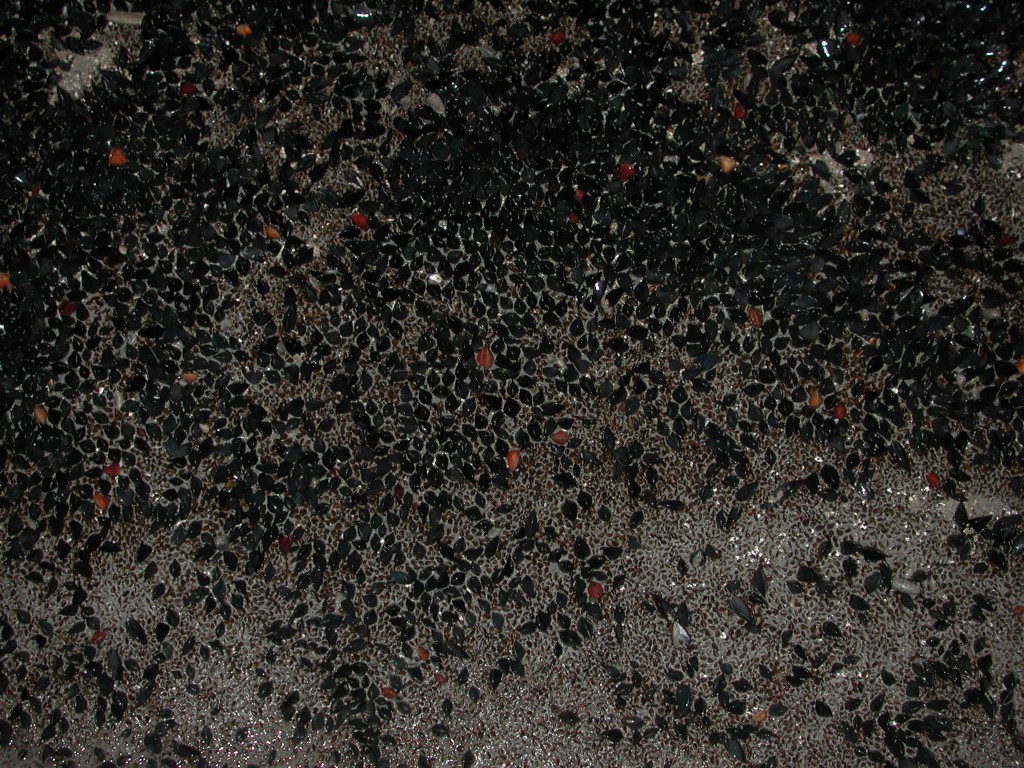
Mussel recruitment looked very good at Kalaloch in 2008. This
view shows an intertidal rock surface with many small mussels (about
1.5-2
cm long, probably first-year individuals) with many more smaller brown
individuals (less than 1 cm long, probably newer recruits) packed
tightly
among them. Such surfaces were common in summer
2008. Photo
by Dave Cowles, July 2008
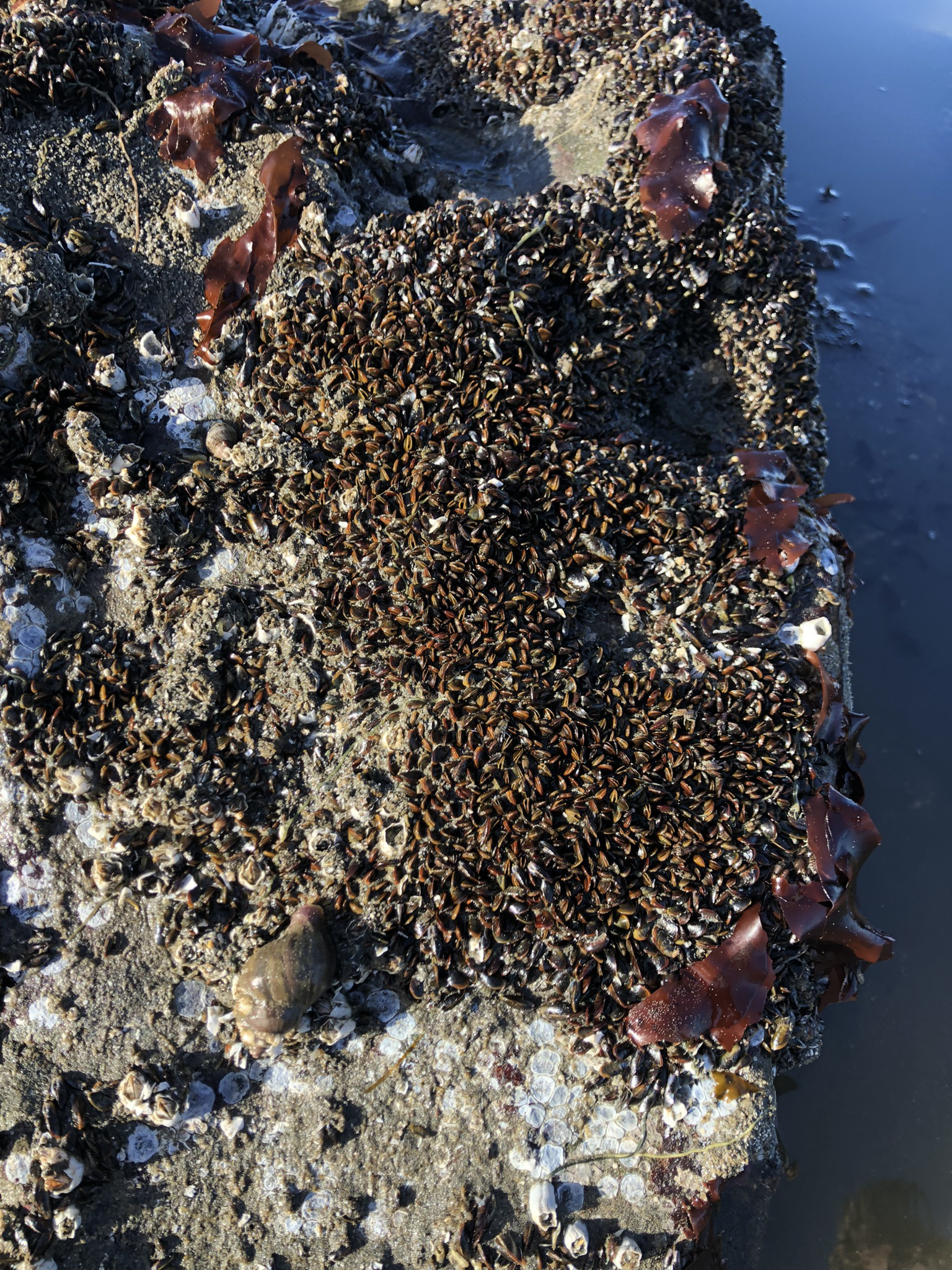
A number of low boulders scattered across the sand at Beach #4 had
abundant recruits again in 2024, as this photo shows. Most of these
individuals are not likely to survive to adulthood due to sand
scouring, possible burial under the sand as the beach
shifts, predation by Nucella
snails, as seen here, or by seastars. Photo by Dave Cowles, July 2024
| Pisaster ochraceus is famous as a keystone predator on Mytilus californianus mussels. According to the studies that support the idea of Pisaster ochraceous as a keystone predator, the mussel Mytilus californianus competes for space on the intertidal rocks with barnacles such as Balanus glandula, Semibalanus cariosus, and Pollicipes polymerus. Mytilus californianus is a superior competitor for space and excludes the other species from the rocks unless Pisaster ochraceus eats enough of the mussel to make room for the other species. However, on the Olympic Peninsula coast including Shi Shi Beach which is just a few miles from where the keystone predator experiments took place, the situation is more complicated than that. The photos below, taken at Shi Shi Beach July 2024, show that, rather than being excluded by Mytilus californianus, mussels and even Fucus disticus algae can often grow on them instead and live in abundance covering the mussel. Pisaster ochraceus were also present but not in high numbers. |
| Clusters of young barnacles heavily encrusting Mytilus californianus |
| The array also includes bigger barnacles. |
| Even several species of algae are piling on, attached to the mussels. |
Authors and Editors of Page:
Dave Cowles (2002): Created original page
Edited by Hans Helmstetler 12-2002, Dave Cowles 2005